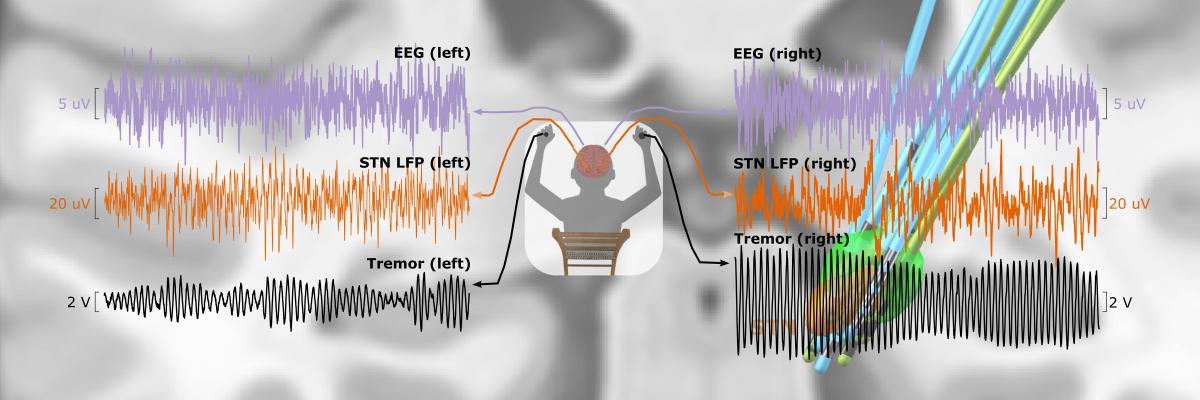He Group
Our group explores how the human brain works, both in health and disease, by using advanced technologies like brain-computer interfaces and neuromodulation. We aim to use our discoveries and tools to develop practical approaches that improve clinical care and patient outcomes.
We use brain-computer interfaces (BCIs) and neuromodulation to investigate the causal relationships between brain activity and behaviour, including disease symptoms. BCIs are technologies that enable direct communication between the brain and external devices, often used to restore or enhance motor, sensory, or cognitive functions. Neuromodulation involves regulating neural activity through targeted electrical or chemical stimulation of specific areas in the nervous system, either to treat neurological conditions or to better understand brain function.
Our research integrates BCIs (e.g., neurofeedback training) with both invasive (e.g., deep brain stimulation) and non-invasive (e.g., repetitive transcranial magnetic stimulation and low-intensity transcranial focused ultrasound stimulation) neuromodulation techniques. This approach allows us to study how neural activity drives behaviour and how brain stimulation interacts with these processes. Ultimately, our goal is to translate these insights into personalised treatment strategies for neurological conditions such as Parkinson’s disease, essential tremor, multiple system atrophy, and disorders of consciousness.
- Development of novel brain-computer interfaces (BCIs) leveraging cortical and subcortical neural signals.
- Application of both invasive and non-invasive neuromodulation techniques.
- Investigation of neural correlates underlying normal and pathological brain functions.
- Neuroimaging and neurophysiological methods, including EEG, MRI, and local field potential recordings
- Experimental studies involving healthy individuals and people with neurological conditions
- Time series analysis, machine learning, and programming
Recent Publications
Datasets are available through our dataset platform is designed to enable the sharing of several classes of research data generated by the Medical Research Council Brain Network Dynamics Unit at the University of Oxford (MRC BNDU). The datasets could include:
- Electrophysiological recording from humans and rodents
- Digital micrographs of brain tissue
- Scripts and code used for analysis of data
- Printable 3D models and microcontroller code
- Code for modelling of neuronal networks
All downloads require making an account; the primary reason for this is to enable us to monitor downloads of datasets which allows us to report this to funding bodies.

